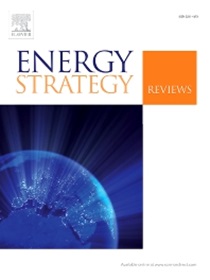探索新兴经济体长期电力需求和负荷曲线的演变:以印尼能源转型为例
IF 7.9
2区 工程技术
Q1 ENERGY & FUELS
引用次数: 0
摘要
准确预测未来电力需求对于有效的电力部门规划至关重要。然而,这种预测对受高度不确定性影响的关键变量很敏感。虽然基于回归的模型被广泛使用,但它们往往忽略了新的电气化潜力和年内动态。本研究以印度尼西亚为例,考察了新兴经济体的长期电力需求,从而解决了这些差距。我们采用最终用途方法来探索社会经济因素如何在不同情景下影响各种最终用途的能源消耗。根据相关发达国家的历史数据,我们预测了每种最终用途的各种能源强度路径,反映了效率的提高和能源使用模式的变化。我们的研究结果表明,印度尼西亚的能源需求可能在2022年至2060年间增长2.1-3.6倍,而电力需求可能增长3.9-8.7倍。根据不同的情况,负荷变化系数(CV)预计将从2022年的12.8%增加到2060年的13.2 - 14.2%。此外,在所有情况下,载客率预计将从2022年的81%下降到2060年的78%左右。这项研究为正在向高度电气化能源系统转型的新兴经济体提供了广泛的可能的电力需求预测和负荷曲线。本文章由计算机程序翻译,如有差异,请以英文原文为准。

Exploring the evolution of long-term electricity demand and load curves in emerging economies: A case study of Indonesia's energy transition
Accurate forecasting of future electricity demand is crucial for effective power sector planning. However, such forecasting is sensitive to key variables influenced by high degree of uncertainty. While regression-based models are widely used, they often overlook new electrification potentials and intra-year dynamics. This study addresses these gaps by examining long-term electricity demand for emerging economies, using Indonesia as a case study. We implement an end-use approach to explore how socio-economic factors influence energy consumption across various end-uses under different scenarios. We project various energy intensity pathways for each end-use based on historical data from relevant developed countries, reflecting improvements in efficiency and changes in energy use patterns over time. Our findings indicate that Indonesia's energy demand could increase by 2.1–3.6 times between 2022 and 2060, while electricity demand may rise by 3.9–8.7 times. The load's coefficient of variation (CV) is projected to increase from 12.8 % in 2022 to 13.2–14.2 % in 2060, depending on the scenario. Additionally, the load factor is expected to decrease from 81 % in 2022 to approximately 78 % in 2060 across all scenarios. This study provides valuable insights into the wide range of possible electricity demand projections and load curves in emerging economies undergoing an energy transition to a highly electrified energy system.
求助全文
通过发布文献求助,成功后即可免费获取论文全文。
去求助
来源期刊

Energy Strategy Reviews
Energy-Energy (miscellaneous)
CiteScore
12.80
自引率
4.90%
发文量
167
审稿时长
40 weeks
期刊介绍:
Energy Strategy Reviews is a gold open access journal that provides authoritative content on strategic decision-making and vision-sharing related to society''s energy needs.
Energy Strategy Reviews publishes:
• Analyses
• Methodologies
• Case Studies
• Reviews
And by invitation:
• Report Reviews
• Viewpoints
 求助内容:
求助内容: 应助结果提醒方式:
应助结果提醒方式:


